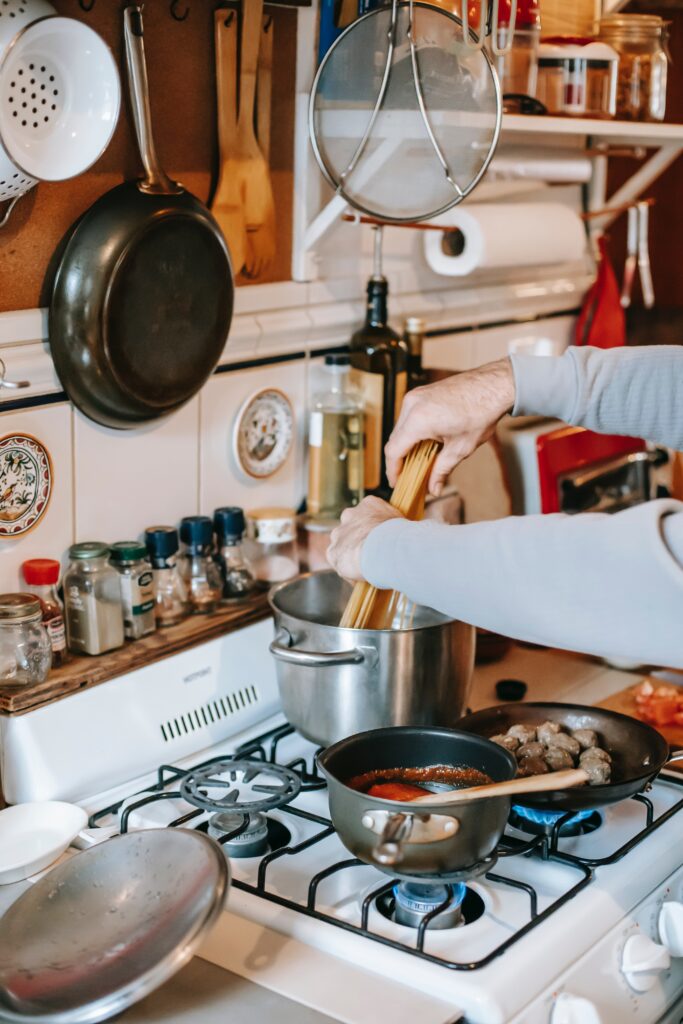
Cooking Up A Storm
Hey there, fellow air quality enthusiasts! Today, we’re diving into a topic that hits close to home – quite literally. Have you ever noticed a sudden change in your indoor air quality while whipping up your favorite meals in the kitchen? Well, you’re not alone! In this blog post, we’ll explore the fascinating world of carbon dioxide and its impact on indoor air quality during everyday cooking adventures.
First things first, let’s talk about carbon dioxide (CO2). It’s a colorless, odorless gas that’s an essential part of Earth’s atmosphere. However, too much of it indoors can lead to some not-so-pleasant consequences for your health and overall comfort.
You might be wondering, “Where does all this excess CO2 come from during cooking?” Well, dear reader, it’s all about the ingredients, appliances, and techniques you use. Let’s break it down:
- Combustion: Cooking involves burning various fuels, such as gas, electricity, or wood. When these fuels burn, they release carbon dioxide into the air. Gas stoves, in particular, can be significant contributors to indoor CO2 levels.
- Food Ingredients: Some ingredients, like baking soda or yeast, release CO2 as they react during cooking. Baking a loaf of bread? You’re releasing CO2 as those delicious loaves rise.
- Ventilation: Your kitchen’s ventilation system plays a vital role. If it’s not properly maintained or not efficient enough, it can allow CO2 to accumulate indoors.
Now, let’s talk about why keeping an eye on indoor CO2 levels matters. I use the Aranet 4 CO2 NDIR sensor – one of my trusty companions in the quest for better indoor air quality. This nifty gadget measures CO2 levels, helping me understand when it’s time to take action.
Why Should You Care?
- Health: Elevated CO2 levels can lead to symptoms like headaches, dizziness, and fatigue. Prolonged exposure to high CO2 can be particularly troublesome for those with respiratory conditions.
- Comfort: Ever felt stuffy or uncomfortable in your kitchen? High CO2 levels can make a room feel stuffy and less pleasant, which isn’t exactly conducive to a happy cooking experience.
- Productivity: If you’re working from home or trying to focus on a recipe, poor indoor air quality can hinder your productivity. Fresh air can help keep your mind sharp.
Tips to Improve Indoor Air Quality While Cooking:
- Ventilation Matters: Use your kitchen exhaust fan or open a window to let fresh air in and expel indoor air pollutants.
- Upgrade Appliances: Consider switching to energy-efficient appliances that emit fewer CO2 emissions. Induction cooktops, for example, are a greener alternative to traditional gas stoves.
- Air Purifiers: Invest in an air purifier with a HEPA filter to remove airborne particles and improve overall air quality. It won’t help with CO2, but a lot of particles come with it!
- Monitor with Aranet 4: Keep an eye on CO2 levels with your Aranet 4 CO2 NDIR sensor. It’s a handy tool to track and manage indoor air quality effectively.
- Cook Smart: Opt for cooking techniques that produce fewer emissions, like using a slow cooker or microwave instead of a gas stove when possible.
As we know from hours of TV competitions: cooking can be a delightful experience, but it’s essential to be aware of its impact on indoor air quality, specifically in terms of carbon dioxide. Maintaining a healthy and comfortable living space is among the most important jobs a home has; let’s do our part and help it along! Next time you whip up a culinary masterpiece, remember to keep an eye on those CO2 levels, and cook with a breath of fresh air!
If you want to test your air quality, feel free to invest in an NDIR sensor of your own or (if you’re in the Mid-Atlantic region), reach out to Breathe Clean!

